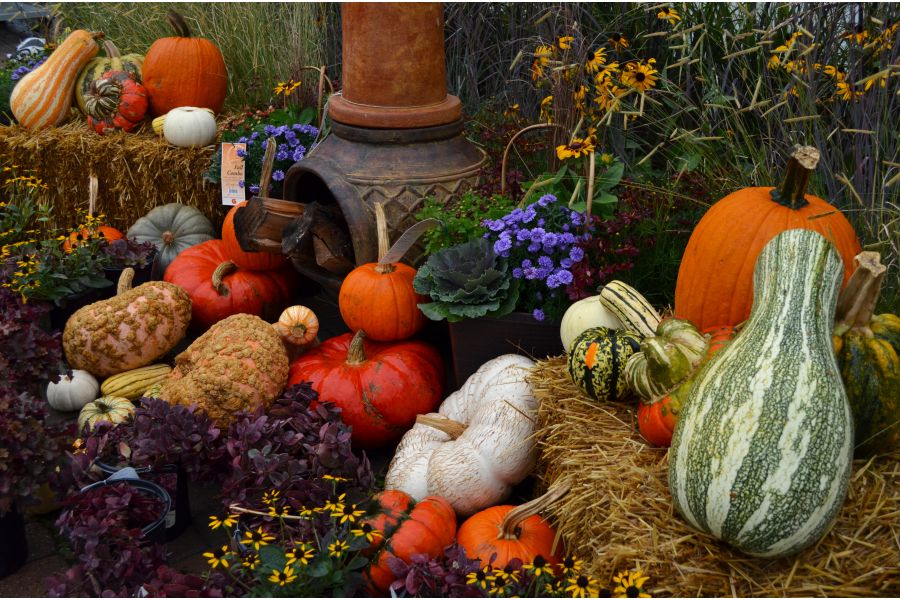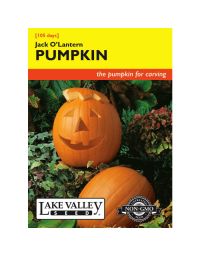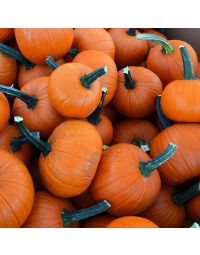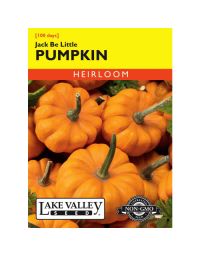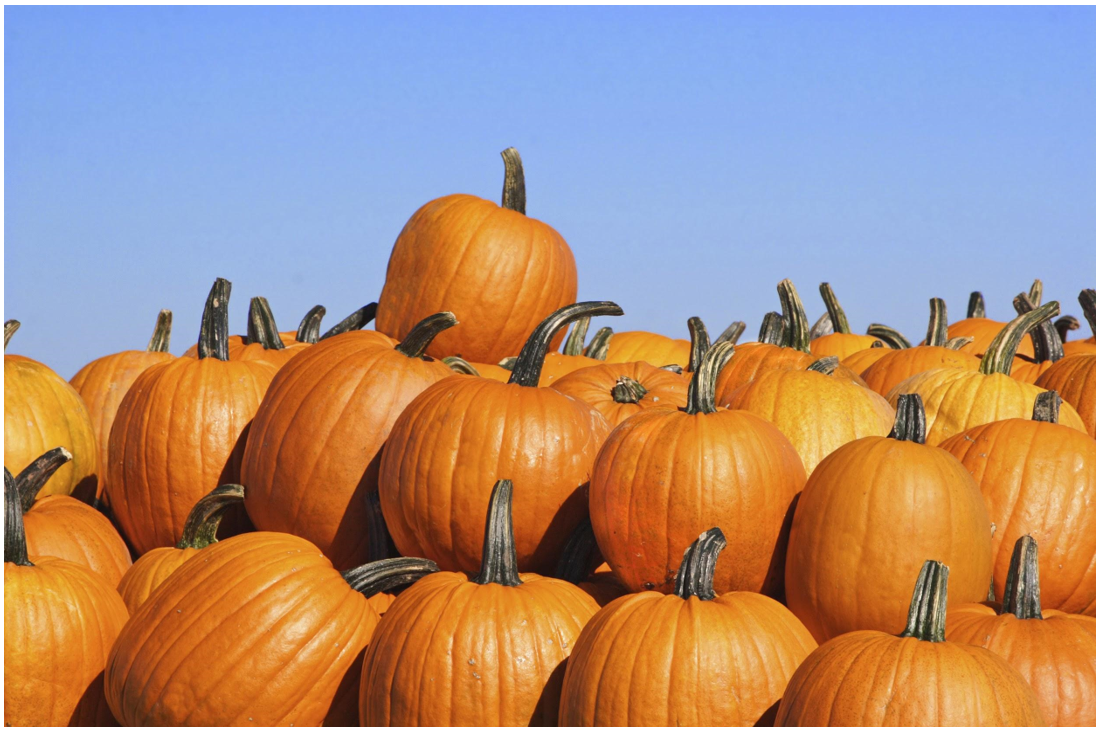
Check for a firm stem to ensure you get a fresh pumpkin!
Pumpkins are believed to have originated in North America. Seeds have been found dating back 7,000 years.
Quick pumpkin facts:
- Native Americans used pumpkins as a staple in their diets well before the Pilgrims landed. When the Pilgrims saw the Native Americans growing and harvesting pumpkins, they adopted the practice.
- Pumpkins are in the same plant family (cucurbita family) as cucumbers and zucchini.
- The Irish brought the tradition of carving turnips and potatoes to America and soon discovered that carving pumpkins, which have fleshier fruit, was easier.
- Pumpkins are rich in Vitamin A and high in fiber.
- Pumpkins are as much a symbol of Thanksgiving as Halloween. Pumpkins have been used for indoor decoration for hundreds of years.
- Giant pumpkins are known as Atlantic Giants. They’ll grow from 400 pounds to over 1800 pounds.
How to choose the right pumpkin:
- Make sure your pumpkin is firm. Physically inspect your pumpkin especially on the bottom where the pumpkin may have been sitting on display or sitting in the field.
- Check for any discoloration or darker shades of orange. These areas may turn into soft spots.
- Make sure your pumpkin has a nice strong green handle (stem). This not only makes the pumpkin look good, but is also an indication of freshness.
How to keep your pumpkin looking good:
- For long term storage, wash your pumpkin in a very mild chlorine solution. This will destroy bacteria which may cause fruit to rot.
- Protect your pumpkin from freezing.
- Avoid warm weather and humidity.
- Place your pumpkin on a sheet of cardboard rather than cement. They tend to rot quicker on cement.
- Never hold your pumpkin by the stem.
Some unique uses for pumpkins:
- Place brightly colored pumpkins on your table as a centerpiece.
- Hollow out your perfect sized pumpkin and serve your favorite soup or gravy out of this natural bowl.
- Hollow out your pumpkin and use it as a table flower vase.
- Hollow out your pumpkin and plant with fall pansies and flowers. Glue some bright red fall leaves for extra harvest flair.
- Use a garden stake and create a pumpkin tier.
- Instead of carving, try etching some creative designs into your pumpkin.
- Paint your pumpkin.
- Create a candle holder.
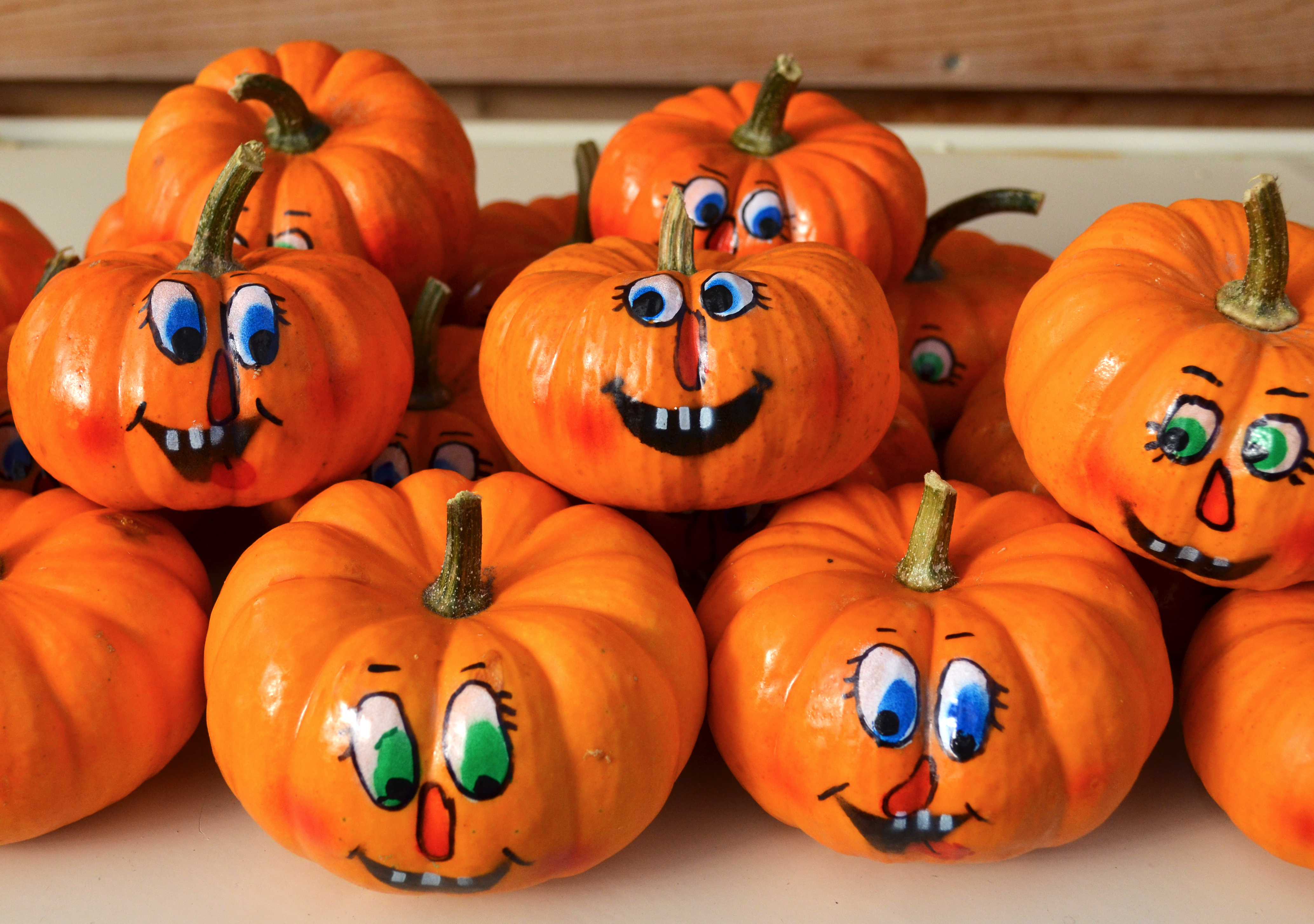
And, of course, Pumpkin Carving:
- Shop online for tools and templates.
- Draw your design on paper the pumpkin with a water-based marker beforehand.
- Cut out the bottom for easier use. You won’t have to flatten the bottom for your candle or light and you won’t break the stem this way either. Use a serrated kitchen knife or a small hand saw.
- If you cut the lid, do so at an angle so the outside diameter is larger than the inside. This prevents the top from falling into the pumpkin when it shrinks
- Kids should carve only under adult supervision.
- Never hold the knife in a stabbing position.
- When carving, keep a portion of the knife blade in the pumpkin and use slow, steady saw strokes.
- Scoop out seeds and stringy flesh with a large spoon or ice-cream scoop. And then scoop it again.
- Carve the facial features closest to the center first and work outward. Cut out the larger features in sections to reduce the chance of damaging your pumpkin.
- Use an X-acto knife (being very careful not to cut yourself) for details and the tip of a potato peeler to make small circles and curves.
- Remove carved portions by gently pushing them into or out of the pumpkin.
- Re-attach a section that is accidentally removed by using a toothpick to pin back in place.
Make design holes large enough to provide air for the candle flame.
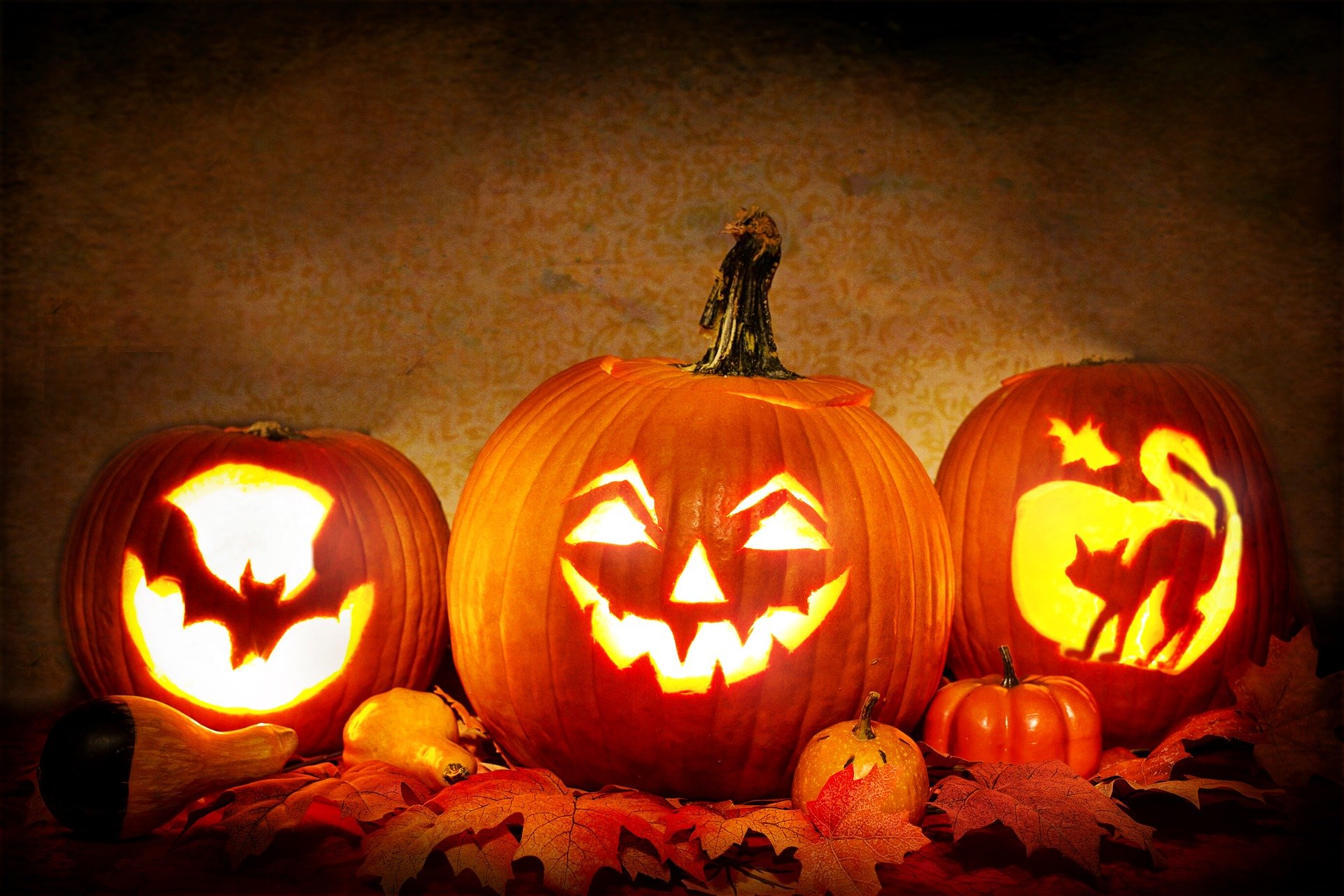
Image by Jill Wellington from Pixabay
The experts at Gertens are always available to answer questions!

